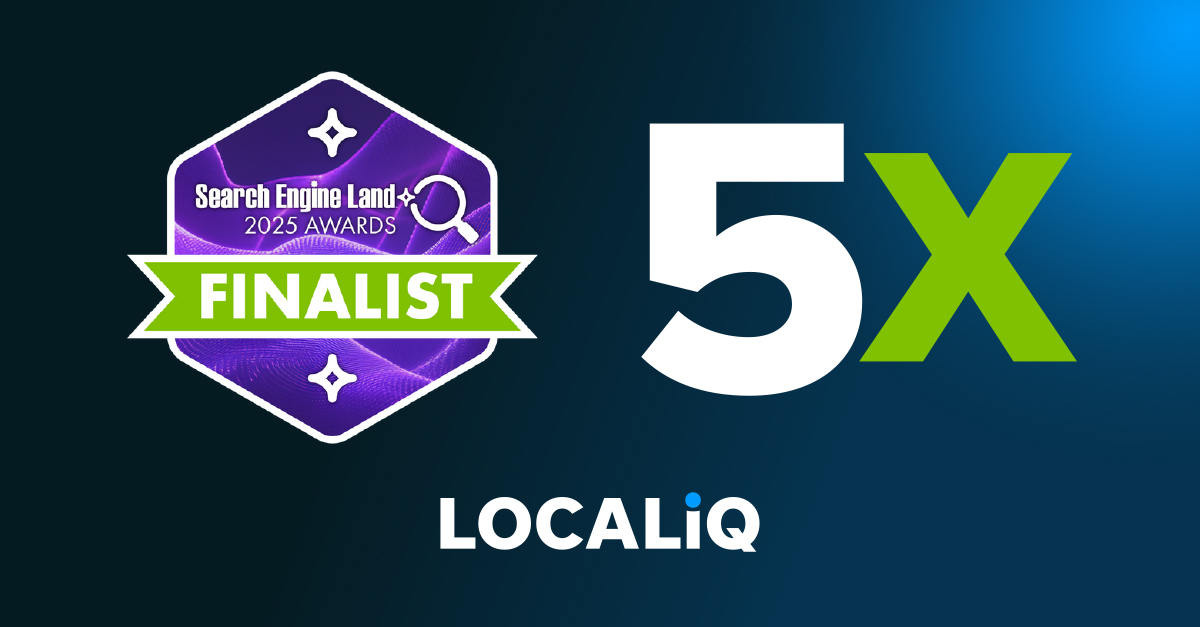Remember when finding new customers meant printing flyers and cold-calling strangers?
Ah, the good old days. When social meant networking at events with a stack of business cards, and “going viral” referred to catching a winter cold. Those tactics were good for their time, but often resembled throwing darts blindfolded and hoping for the occasional bullseye.
Fast forward to today, and “lead generation” has become the buzzword du jour. Every marketer worth their LinkedIn endorsements will tell you how important it is.
In this guide, we’re going to shatter conventional wisdom about what lead generation truly is and replace it with something infinitely more valuable. You’ll discover:
- Why traditional lead generation techniques are failing modern businesses (and what to do instead).
- The hidden psychology that turns casual browsers into eager prospects (hint: it’s not about your funnel).
- How to identify your “perfect-fit” leads that competitors are systematically ignoring.
- The counterintuitive approach that generates higher-quality leads while actively reducing your marketing costs.
- When to deliberately pursue fewer leads (and yes, it works).
Most importantly, you’ll finish this article with clear action steps you can implement immediately, regardless of your budget or technical expertise.
Grab a coffee and get comfortable. It’s time to change how you think about growing your business.
What is lead generation?
Let’s start with something simple. Now, you probably already know what lead generation is, but if you’re reading this article, chances are you want to move beyond the basics and understand what makes lead generation truly effective for growing your business. Most definitions focus on collecting contact information, but that barely scratches the surface of what good lead generation consists of.
At its core, lead generation in digital marketing represents the bridge between anonymous website visitors and revenue-generating customers.
Many marketers misunderstand lead generation as simply an acquisition tactic. In reality, effective lead generation acts as a qualification system that filters out poor-fit prospects while guiding ideal customers toward solutions they need.
The psychology behind lead generation reveals why traditional approaches often fail. When someone hands over their contact information, they’re not making a purchasing decision; they’re making a much smaller privacy decision. “Is this PDF guide worth my email address?” feels very different from “Is this service worth £5,000?”
Good lead generation acknowledges this gap and builds appropriate stepping stones between initial interest and purchase consideration. Each interaction should gradually increase trust while matching the prospect’s needs with your solution.
What makes great lead generation different from average efforts? The best programs focus on signs of buying intent rather than just interest. Think about it: a prospect who reads three blog posts about a specific problem, then grabs a related case study, shows much more interest than someone who fills out a form after seeing a paid ad.
Here’s what the research tells us:
- According to Gartner, B2B purchases used to involve about five stakeholders, but now more than 11 people typically participate in buying decisions, with some purchases involving up to 20 stakeholders.
- About 75% of B2B buyers prefer to research independently before talking to sales representatives, showing how much the buying process has changed.
- Around 42% of B2B decision-makers look at 4-6 different information sources when researching a purchase, showing how thorough buyers are before making decisions.
These numbers show why it’s so important to connect with potential customers early in their research journey, before they talk to your competitors. It’s all about offering the right lead generation techniques that match how people buy today.
The lead generation reality check
Let’s face it. Most lead generation boils down to collecting contact details and hoping some percentage converts. That’s the standard playbook most marketers follow.
But does anyone read the PDF guides they download anymore? Most sit forgotten in download folders or get a quick skim before being abandoned. The average professional’s inbox overflows with newsletters they never signed up for and “check-in” emails from companies they barely remember.
This obvious pattern creates what some marketers call the “Lead Generation Paradox.” Making it super easy to become a lead typically means those leads care less about what you offer. The person who hands over an email for a quick download normally has much less interest than someone who spends 30 minutes on a detailed consultation call.
Most businesses chase higher lead counts when what they should really be focusing on is finding the right people who genuinely need their solutions.
Reboot your lead generation approach
Before we get into the tactics, let’s take a step back and think about what matters in lead generation. It’s not just about collecting names and email addresses. It’s about starting conversations with people who have problems you can solve.
Think about your buying habits. When you’re researching a solution to a business problem, what makes you give your contact information to a company? It’s likely their demonstration of understanding your specific challenges and offering real value.
Great lead generation isn’t about tricking people into giving you their email. It’s about being so good and helpful that people want to hear more from you. This fundamental shift in thinking, from “collecting” leads to “earning” them. is what separates the winners from the losers.
With that mindset in place, let’s get into some lead generation tactics that work.
5 Lead generation techniques that work
Most businesses mistakenly focus on lead generation tactics rather than lead generation strategy. Let’s explore techniques that address both the “how” and the “why” of effective lead generation.
1. Content that answers buyer questions
Generic content might attract traffic, but specific content attracts buyers. Research shows that most B2B buyers prefer content that directly addresses their specific situation rather than general educational material.
Create content that answers the exact questions your buyers ask during their research phase. Tools like AnswerThePublic can reveal these questions, but the best source is often your sales team’s call notes.
2. Problem-aware landing pages
Traditional landing pages focus on solutions. More effective landing pages focus on problems, specifically, acknowledging the prospect’s problem in their own language. Conversion rates typically increase when landing page copy reflects the visitor’s problem awareness stage rather than jumping straight to solution details.
For example, instead of “Our CRM software features,” try “Still losing customer details between spreadsheets and email?”
3. Multi-step lead forms
Interestingly, longer forms with the right structure often convert better than short forms. The key lies in breaking the form into logical steps that create mini-commitments. Research shows multi-step forms can improve completion rates significantly, sometimes by up to 300%.
The psychology works like this: after completing the first step, visitors feel invested in the process and are more likely to continue. Each step should feel like a natural progression rather than an escalating commitment.
4. Lead magnets that preview your process
The most effective lead generation ideas give prospects a “sample” of what working with you feels like. This might be a simplified version of your assessment process, a diagnostic tool, or a framework you use with clients.
This approach attracts leads who appreciate your methodology, exactly the type of client you want, while deterring those who wouldn’t be a good fit.
5. Behavioural email sequences
Most follow-up email sequences operate on arbitrary timelines – day 1, day 3, day 7.
Behavioural sequences are triggered based on prospective actions instead. Someone who opens every email but never clicks links has different needs than someone who ignores most emails but deeply engages with specific content.
Tracking these patterns allows you to customise the journey, sending the right message when the prospect shows readiness rather than when your calendar dictates.
Lead generation ideas beyond the basics
Looking for fresh ways to find potential customers that your competitors are missing? These approaches have worked surprisingly well for businesses across various industries.
The contrarian content approach
When everyone in your industry says the same things, going against the grain can make you stand out. Content that thoughtfully challenges common assumptions grabs attention from smart buyers who are tired of hearing the same old advice.
Just make sure you back up your viewpoints with solid evidence and real experience. Being different just to be different won’t cut it – you need substance behind your stance.
Ungated premium content
Some clever marketers do the exact opposite of what everyone else does – they remove forms from their best content. Sounds crazy, right? But this approach can work well when you combine it with retargeting ads, strong calls-to-action, and contact opportunities sprinkled throughout the content.
Companies like Drift have seen their overall lead flow increase after removing forms because more people consumed and shared their best material. Sometimes, fewer barriers lead to better results.
Partnership-based lead exchanges
Another way you can generate leads is by creating valuable research or resources that other businesses (ones that don’t compete with you) would love to share with their audience.
This strategy often brings in higher-quality leads because they come with an implicit stamp of approval from a company the prospect already knows and trusts. It’s like getting a warm introduction rather than cold-calling.
Community-first lead generation
Building a community around your area of expertise creates a natural foundation for lead generation. People join for the value of being part of the community but become leads when they’re ready to buy related services.
Unlike traditional lead generation that creates friction when asking for contact information, community approaches remove this friction by providing ongoing value before, during, and after any transaction. You’re building relationships first, and the sales follow naturally.
Measuring metrics that matter in lead generation
The traditional metrics we use for lead generation often mislead more than they help. Volume-based metrics push teams to prioritise quantity over quality. Instead, focus on these more meaningful measurements:
Sales acceptance rate
What percentage of marketing-generated leads does your sales team pursue? This metric shows how well aligned your marketing and sales teams are about what makes a qualified lead worth following up on.
Time-to-qualification
How quickly can you figure out if a lead matches your ideal customer profile? Good lead generation systems quickly spot promising prospects while filtering out poor fits, saving everyone time and effort.
Attribution by buying stage
Different channels work better at different parts of the buying journey. Social media might work great for early awareness, while webinars might be better for mid-funnel evaluations. Track which channels influence specific stages of the decision process rather than giving all credit to whatever happened last.
Customer lifetime value by lead source
Some lead sources bring in customers with higher retention rates and more additional purchases over time. When you track customer value back to where they came from, you often find surprising patterns about which lead generation activities truly grow your business.
Moving beyond traditional lead generation
Let’s talk about what’s next in finding new customers. Forget about just collecting form submissions, the good stuff happens when you build actual relationships with people who might buy from you.
Account-based experience
Stop treating leads like they’re all isolated individuals making decisions on their own. In the real world, buying decisions involve teams of people, each with their concerns and priorities.
When you target entire buying committees instead of just one person, you’re playing the game as it exists. Create different messages for the technical folks, the finance people, and the end-users at the same company. They all care about different things.
Think about it – when was the last time any major purchase at your company happened because of just one person? Probably never. So why would your lead generation strategy pretend otherwise?
Intent-based prioritisation
There are cool tools now that can tell you which companies are actively researching topics related to what you sell, even before they fill out a form on your site.
It’s like knowing who’s shopping for shoes before they even walk into your store. Instead of waiting around hoping someone finds you, you can reach out to companies already looking for solutions like yours.
This isn’t about being creepy. You just need to focus your time and energy on people who are in buying mode, not just anyone with a business email address.
Conversational marketing
Remember when business was done through conversations, not forms? Live chat brings that back. When someone has a question, they get an answer right away instead of filling out a form and waiting for a follow-up that might never come.
The trick is knowing when to use bots and when to bring in real humans. Use simple questions to figure out what someone needs, then connect them with the right information or person.
It’s like the difference between walking into a store where someone asks if they can help you, versus being handed a questionnaire at the door. Which experience would you prefer?
Putting it all together
So, where does all this leave us? We’ve picked apart the usual lead generation playbook and looked at some better options. Let’s wrap up what we’ve learned and give you some practical next steps.
The old way of chasing loads of leads doesn’t cut it anymore. We’ve seen how the “Lead Generation Paradox” works – make it too easy to become a lead, and you end up with people who don’t really care about what you’re selling. Better to focus on meaningful conversations with people who actually need what you offer.
We have to be realistic about what happens when someone gives you their email. They’re not saying “I want to buy from you” – they’re just saying “this PDF might be worth reading.” There’s a massive gap between those two things. Your job is to build a bridge across that gap, not pretend it doesn’t exist.
The leads your competitors are missing? They’re often hiding in plain sight. They’re the people who don’t fit the obvious target profile but have problems your product solves perfectly. They’re the ones engaging deeply with specific content rather than downloading everything you publish.
Here’s what you can do right now:
Take a hard look at where your leads come from. Which sources give you customers, not just email addresses? Double down on those.
- Go through your content and ask: “Does this answer real questions our buyers have?” If not, fix it or scrap it.
- Try splitting your lead form into steps instead of one long form. See which approach gets you better quality leads.
- Experiment with removing forms from some of your best content. Add smart calls-to-action instead and see what happens.
- Talk to your sales team about lead quality. Create metrics you both care about, not just marketing vanity metrics.
The bottom line? Stop chasing lead counts and start building relationships. Good lead generation feels less like filling a funnel and more like starting conversations with people who might genuinely need your help.
About LOCALiQ
Need better leads for your business? At LOCALiQ, we help companies across the UK apply these lead generation strategies with real results. We work with you to find people who want what you’re selling – the kind who become loyal customers. Our approach is simple and focused on what counts, bringing in business that sticks around. If you’re tired of wasting time on leads that go nowhere, check us out at localiq.co.uk and see how we can help.
State of Digital Marketing Report 2024
Exclusive insights and data from the marketing strategies of over 500+ UK business






